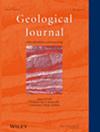Reduced Granitic Rocks and Related Gold Mineralisation: Implications From Chronology, Geochemistry and Sr–Nd–Hf–O Isotopic System of Early Cretaceous Granites From the Wulong Gold Deposit, Liaodong Peninsula, NE China
Abstract
The Liaodong Peninsula is the northeastern part of the North China Craton and hosts abundant Late Mesozoic granites and associated gold deposits. The Wulong deposit contains 57.5 t Au with an average grade of 7.1 g/t and is the largest gold deposit in the Liaodong Peninsula. The Wulong gold orebodies are hosted in Mesozoic biotite granites and have a close association with synchronous granite porphyry dykes. In this study, we provide a systemic geochemical and chronological study to distinguish fertile granites from barren ones from the Wulong deposit. Our study shows that the Wulong fertile granite porphyry (high Sr/Y) and Sanguliu barren granite (low Sr/Y) have zircon U–Pb ages of 132 ± 1 and 136 ± 0.4 Ma, respectively. The fertile and barren granites share similar REE patterns by characteristic of LREE enrichment and HREE depletion. They are classified as reduced ilmenite-type granitic rocks. Petrochemistry and Sr–Nd–Hf–O isotopes show that the Wulong fertile and Sanguliu barren granites were derived from intensive crustal reworking in the North China Craton. The Wulong fertile granites were derived from mixing of lithospheric mantle–derived and thickened ancient lower crust–derived magmas. The Sanguliu barren granites were derived from partial melting of the ancient lower crust with normal crustal thickness. Geochemical features of zircon and apatite indicate that the both fertile and barren granites are similar in crystallisation temperature, water content, and oxygen fugacity. Our study suggests that magma source composition is essential to gold metallogeny, and mantle-derived components are a key indicator to distinguish fertile and barren granitoids. Exploration for gold deposits related to reduced intrusions may be promising within the Liaodong Peninsula.


 求助内容:
求助内容: 应助结果提醒方式:
应助结果提醒方式:


